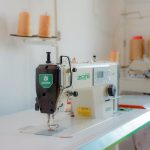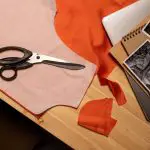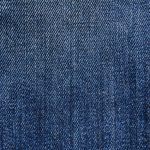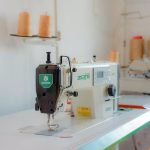You’ll find that upholstery staple guns come in three main types: manual, electric, and pneumatic, each with unique strengths. Manual guns are lightweight and precise but need more effort. Electric models offer consistent power with less strain but can be heavier and noisier. Pneumatic guns excel at heavy-duty tasks but require an air compressor. Choosing the right one depends on your project size, material, and comfort. Keep exploring to discover how to pick and maintain the perfect tool for your work.
Table of Contents
Key Takeaways
- Manual staple guns offer portability and precise staple placement but require more hand strength and effort for dense materials.
- Electric staple guns provide consistent power and depth with less effort but are heavier, noisier, and need a power source.
- Pneumatic staple guns deliver powerful, rapid stapling ideal for heavy-duty projects but require an air compressor and regular maintenance.
- Choose a staple gun based on project size, material type, frequency of use, and user comfort to minimize fatigue.
- Regular maintenance includes cleaning, lubricating moving parts, checking screws, and proper storage to ensure optimal staple gun performance.
Understanding the Basics of Upholstery Staple Guns
Before you start any upholstery project, it’s important to understand how staple guns work and what makes them ideal for the job. You’ll find that these tools are designed to drive staples quickly and securely into various materials, like fabric and wood, ensuring a tight hold.
Their compact size and ease of use allow you to maneuver around curves and corners without hassle. Most staple guns feature a trigger mechanism that, when pressed, propels a staple out with enough force to penetrate your material effectively.
You’ll appreciate how they provide speed and precision, saving you time compared to using a hammer and nails. Knowing these basics helps you choose the right type of staple gun to match your specific upholstery needs.
How Manual Staple Guns Work
When you squeeze the trigger on a manual staple gun, it engages a lever that drives the staple into your material.
This simple mechanism uses your hand’s force to push the staple out quickly and efficiently.
Understanding how the trigger and lever work together helps you use the tool more effectively.
Mechanism of Operation
Although manual staple guns might seem simple, they rely on a clever mechanism that converts your hand’s force into a powerful, precise staple drive. When you squeeze the handle, it activates an internal system that stores and releases energy efficiently.
Here’s how it works:
- You apply pressure to the handle, compressing a spring inside.
- The compressed spring stores the energy generated by your hand.
- Once fully compressed, the spring releases suddenly, driving the staple forward with force.
- The staple pierces the material and secures it firmly before the mechanism resets for the next staple.
This mechanism guarantees consistent staple placement and depth while minimizing the effort you need to apply, making manual staple guns reliable and effective for upholstery tasks.
Trigger and Lever Function
Two key components—the trigger and lever—work together to make manual staple guns effective and easy to use. When you squeeze the trigger, it engages the lever mechanism, which stores and releases energy to drive the staple into your material. This simple action lets you apply controlled force without straining your hand.
| Component | Function |
|---|---|
| Trigger | Initiates the stapling process |
| Lever | Amplifies hand force |
| Spring | Stores energy for staple drive |
| Magazine | Holds staples |
| Anvil | Shapes and pushes staples in |
Understanding this mechanism helps you operate your manual staple gun efficiently, ensuring staples go in smoothly with minimal effort.
Advantages and Disadvantages of Manual Staple Guns
When you use a manual staple gun, you’ll appreciate its lightweight design that gives you great portability and control.
However, you’ll need to apply significant effort to drive staples, which can be tiring over time.
Balancing these pros and cons will help you decide if it’s the right tool for your upholstery projects.
Portability and Control
Since you’ll often be working in tight or awkward spaces, manual staple guns offer exceptional portability and control that electric models can’t match. You hold the tool directly, feeling every press and angle, which helps you place staples exactly where you want. This precision is essential for detailed upholstery work.
Plus, manual guns don’t rely on cords or batteries, so you’re free to move around without restrictions.
Here’s why portability and control matter:
- Lightweight design reduces hand fatigue.
- No cords or power sources limit your movement.
- Direct manual operation offers precise staple placement.
- Compact size fits easily into tight spaces.
With manual staple guns, you get unmatched maneuverability and accuracy for your upholstery projects.
Power and Effort
Although manual staple guns give you great control, they require more physical effort to operate than electric models. You’ll need to squeeze the handle firmly each time, which can tire your hand during long projects. However, manual guns don’t rely on batteries or power sources, so they’re always ready to go. They’re ideal for light to medium tasks but might struggle with dense materials. Here’s a quick comparison:
| Aspect | Advantage | Disadvantage |
|---|---|---|
| Power | Consistent force from you | Requires significant effort |
| Effort | No need for external power | Hand fatigue on long use |
| Maintenance | Simple, fewer parts | Can wear out springs |
| Reliability | Works anywhere anytime | Limited for heavy-duty tasks |
| Cost | Generally cheaper | May need more frequent replacement |
How Electric Staple Guns Operate
If you want to work quickly and with minimal effort, electric staple guns deliver powerful performance at the push of a trigger. They use an electric motor powered by a rechargeable battery or direct cord connection to drive staples into your material.
Here’s how they operate:
- You load a strip of staples into the magazine.
- When you pull the trigger, the motor activates.
- The motor drives a piston or hammer mechanism forward.
- The piston pushes a staple out of the gun, embedding it firmly into the surface.
This process repeats rapidly with each trigger pull, letting you secure upholstery or other materials efficiently without manual strength.
Electric staple guns combine speed and ease, making your projects smoother and faster.
Pros and Cons of Using Electric Staple Guns
While electric staple guns offer impressive speed and convenience, you should weigh their advantages against certain drawbacks before choosing one for your upholstery projects.
On the plus side, electric staple guns let you work faster and with less effort compared to manual models, reducing fatigue during extended use. They provide consistent staple depth and power, improving your work’s precision.
However, you’ll need a power source, which can limit mobility. They’re also generally heavier and noisier than manual guns, which might be a concern in quiet settings. Additionally, electric models can be pricier and require occasional maintenance or repairs.
Electric staple guns require power, tend to be heavier and louder, and may need more upkeep than manual ones.
Balancing these pros and cons will help you decide if an electric staple gun fits your specific upholstery needs.
Pneumatic Staple Guns: Functionality and Features
Electric staple guns provide convenience and speed, but you might find pneumatic staple guns offer a different level of power and efficiency that suits your upholstery work better.
These tools use compressed air to drive staples with consistent force, making them ideal for heavy-duty tasks.
When you use a pneumatic staple gun, you’ll notice:
- Consistent Stapling Power – Air pressure guarantees each staple is driven with the same strength.
- Reduced User Fatigue – Less physical effort is needed since the air does the work.
- High Stapling Speed – Rapid firing helps you finish projects faster.
- Durability and Longevity – Designed for professional use, these guns hold up well over time.
Understanding these features will help you decide if a pneumatic staple gun fits your upholstery needs.
Benefits and Drawbacks of Pneumatic Staple Guns
Though pneumatic staple guns deliver powerful and consistent performance, you should weigh their benefits against certain drawbacks before choosing one. They excel at heavy-duty tasks and offer speed, but they require an air compressor, which adds cost and limits portability. Maintenance can be more involved compared to manual or electric models.
| Benefits | Drawbacks |
|---|---|
| Powerful, consistent stapling | Requires bulky air compressor |
| Suitable for high-volume work | Less portable than other types |
| Faster and reduces user fatigue | Needs regular maintenance |
Considering these pros and cons helps you decide if a pneumatic staple gun fits your upholstery needs and workspace setup without surprises.
Key Factors to Consider When Choosing an Upholstery Staple Gun
Choosing the right upholstery staple gun means balancing power, portability, and maintenance based on your specific needs.
You want a tool that fits your project size and frequency without causing unnecessary fatigue or hassle. Here are four key factors to take into account:
- Type of Staple Gun: Manual works well for small jobs, electric offers convenience, and pneumatic delivers power for heavy-duty tasks.
- Weight and Ergonomics: Choose a lightweight, comfortable design to reduce hand strain during extended use.
- Staple Size Compatibility: Verify the gun supports the staple sizes your projects require.
- Durability and Build Quality: Look for sturdy materials and reliable construction to withstand frequent use.
Keep these factors in mind, and you’ll select a staple gun that matches your upholstery needs perfectly.
Maintenance Tips to Extend the Life of Your Staple Gun
Regular maintenance can greatly extend the life of your staple gun and keep it performing smoothly.
Start by cleaning your tool after each use—remove dust, debris, and leftover staples to prevent jams and corrosion.
Lubricate moving parts regularly with a few drops of machine oil to reduce friction and wear.
Check for loose screws or worn components and tighten or replace them promptly.
Store your staple gun in a dry, cool place to avoid rust and damage.
If you use a pneumatic model, inspect the air hose and fittings for leaks or cracks.
Following these simple steps will help you avoid costly repairs and guarantee your staple gun stays reliable for all your upholstery projects.
Frequently Asked Questions
Can Upholstery Staple Guns Be Used for Outdoor Furniture Projects?
You can use upholstery staple guns for outdoor furniture projects, but make certain to choose staples resistant to rust and weather. Also, select materials suited for outdoor use to guarantee durability and long-lasting results in your project.
What Safety Gear Is Recommended When Using Staple Guns?
Imagine a sudden staple misfire—ouch! You’ll want safety glasses to protect your eyes, gloves to shield your hands, and ear protection if it’s noisy. Don’t forget sturdy clothes to keep your skin safe, too.
Are There Eco-Friendly Staple Options Compatible With These Guns?
You can find eco-friendly staples made from recycled materials or biodegradable options compatible with most staple guns. Just check the size and type your gun requires, and you’ll minimize environmental impact without sacrificing performance.
How Do Staple Sizes Affect Furniture Fabric Choices?
You’ll want to match staple size to fabric thickness and durability; smaller staples suit delicate fabrics without damage, while larger staples provide stronger hold for heavy or thick materials, ensuring your furniture stays secure and looks neat.
Can Staple Guns Be Rented Instead of Purchased?
Renting a staple gun lets you dip your toes before diving in. You can easily rent one from hardware stores or tool libraries, saving money and space if you only need it for a short project or occasional use.
- How to Clean and Restore Vinyl Upholstery (For Cars, Boats, and Furniture) - July 8, 2025
- How to Clean Velvet Upholstery Without Crushing the Pile - July 8, 2025
- How to Clean Suede Upholstery and Restore Its Nap - July 8, 2025







